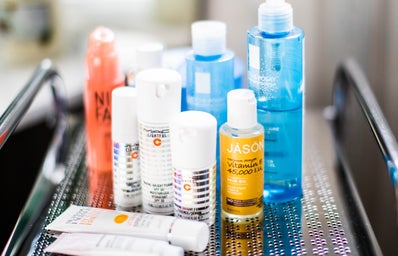At 9:30am this Saturday, May 11, Princess Merida from Brave will be honored in a royal coronation ceremony at the Magic Kingdom theme park in Disney World. She will be the 11th princess welcomed into the official Disney Princess family, joining Snow White, Cinderella, Aurora, Ariel, Belle, Jasmine, Pocahontas, Mulan, Tiana and Rapunzel.
Last month, Disney and Target observed their annual National Princess Week, a self-established occasion to “celebrate the sparkle and wonder of every princess – real, aspiring, or imagined.” Or, a weeklong business strategy aimed at selling more dolls and princess paraphernalia – and one of the most gender binary holidays I’ve ever seen.
The pervasive, stereotypical notion that princesses are defined by pink dresses and long, perfect hair is an ideology young girls inevitably face while growing up. I remember being eight years old and asking my mom to brush my hair one hundred times before bed, just like a princess. Feminist blogger and psychotherapist Mary Finucane, founder of the Disney Princess Recovery blog saw several of these “red flags” in her own daughter’s play and behavior such as the “Rapunzel Syndrome.” This problem was coined when her daughter burst into tears upon having to trim her hair, crying, “Princesses don’t have short hair!.” [Note: even though (spoiler!) Rapunzel cuts her magic hair at the end of Tangled and it turns boring and brown and normal, every Disney doll and advertisement still portrays her with her long, blonde hair]. Finucane’s daughter also refused to wear pants because princesses only wore dresses, and would sit on the stairs lamenting, “Princesses have to wait for the Prince.” Finucane initially wrote it off as a phase, but “She had stopped running and jumping because princesses didn’t do those things. That was about the time I stopped waiting for the phase to pass – when she stopped running.”
In her book, Cinderella Ate My Daughter, Peggy Orenstein attempts to navigate raising her daughter Daisy into someone “happy and self-confident amid a world that encourages little girls to engulf their rooms in pink chiffon and rhinestone tiaras.” Both Orenstein and Finucane address the problem of the media and marketing, and their negative influence on little girls. Created in the late 90s for purely commercial purposes, the Disney Princess franchise has grown into a multi-billion dollar industry. It’s no secret that the Disney Princess line has been ridiculously lucrative in the past decade, even topping Forbes Best-Selling Licensed Entertainment Products at number one with 1.6 billion dollars racked up in retail sales in 2011. Star Wars took second, trailing by $100 million. Note, this is in princess sales only, not including all Disney products.
Actress, singer and children’s book author Julie Andrews is the face of Princess Week. However, unlike her partner companies, she has no marketing agenda. The Julie Andrews Collection website, which promotes Andrews’ literary activities, posted “30 Ways to Celebrate National Princess Week” in honor of the occasion. This inclusive list covers every activity from throwing a tea party to doing charity work, and even includes books to read such as Not All Princesses Dress in Pink by Jane Yolen and The King’s Equal by Katherine Paterson. It extends the narrow definition of a princess beyond shiny tiaras and pretty dresses, while still feeling just as magical. It encourages education kindness, and sincerity. It also suggests designing your own castle and building it out of sand or Legos. The website itself includes many resources for parents and teachers to encourage reading and writing, as well as resources for people who are interested in writing children’s books.
This article is part of a series focusing on beauty and the media.

